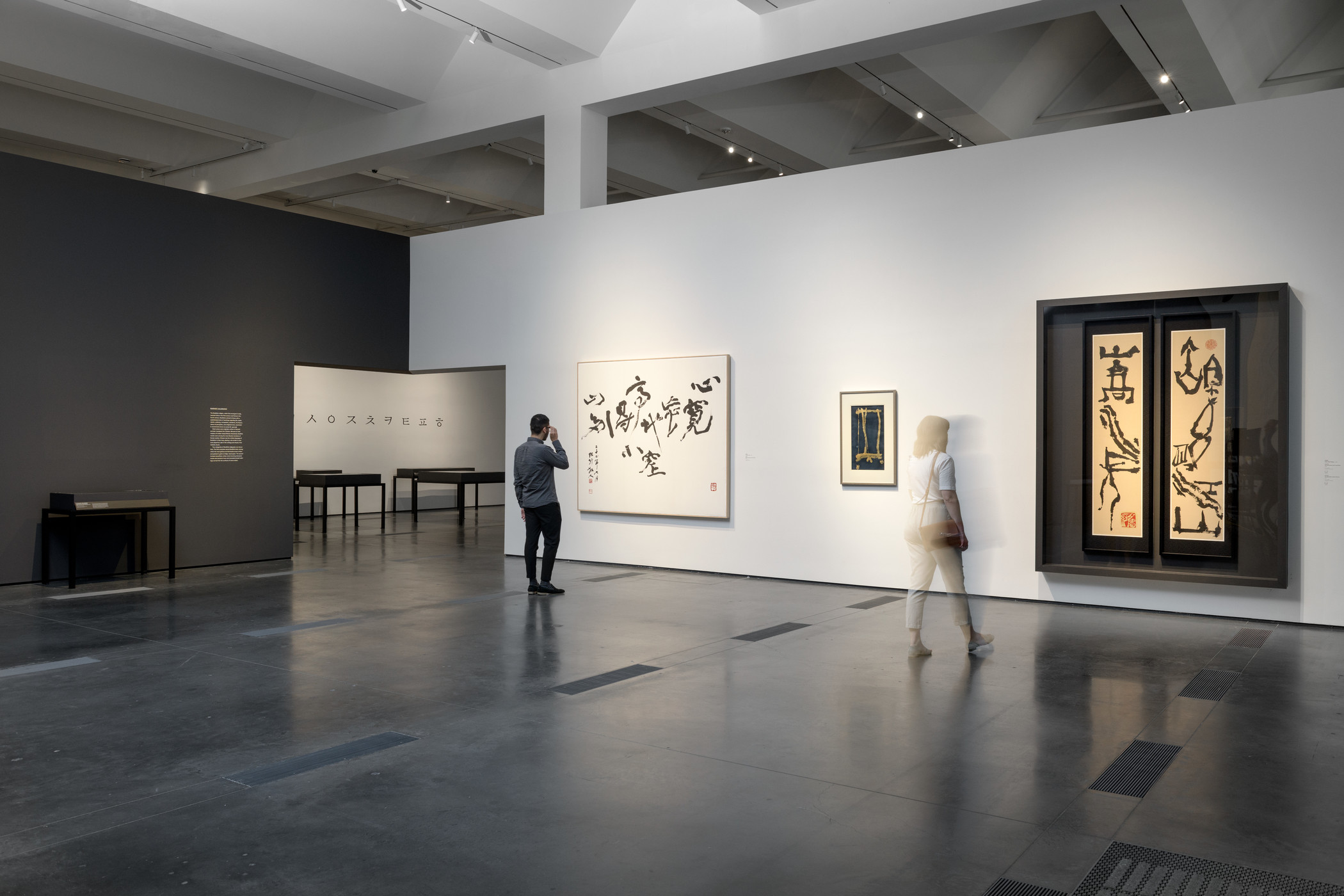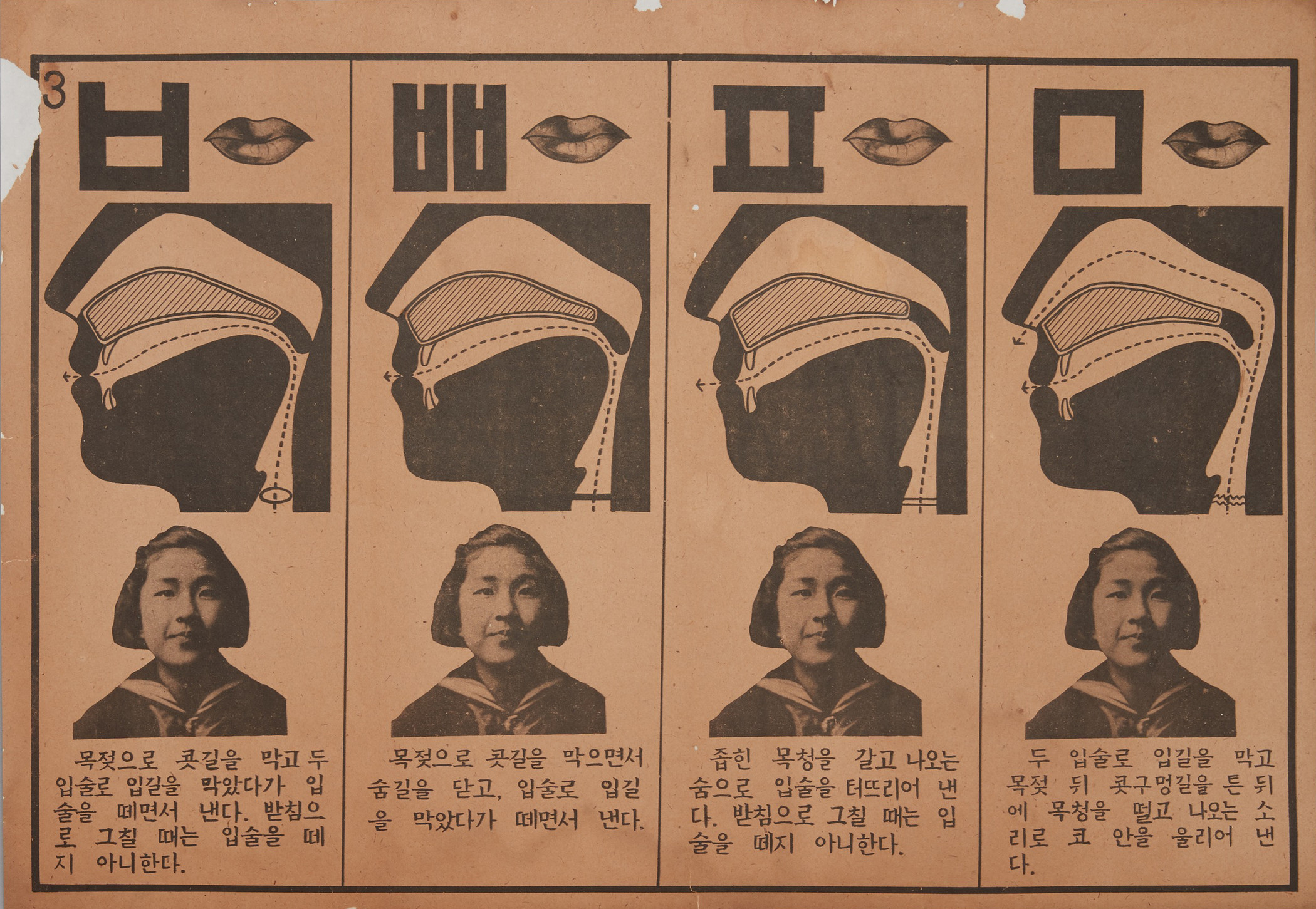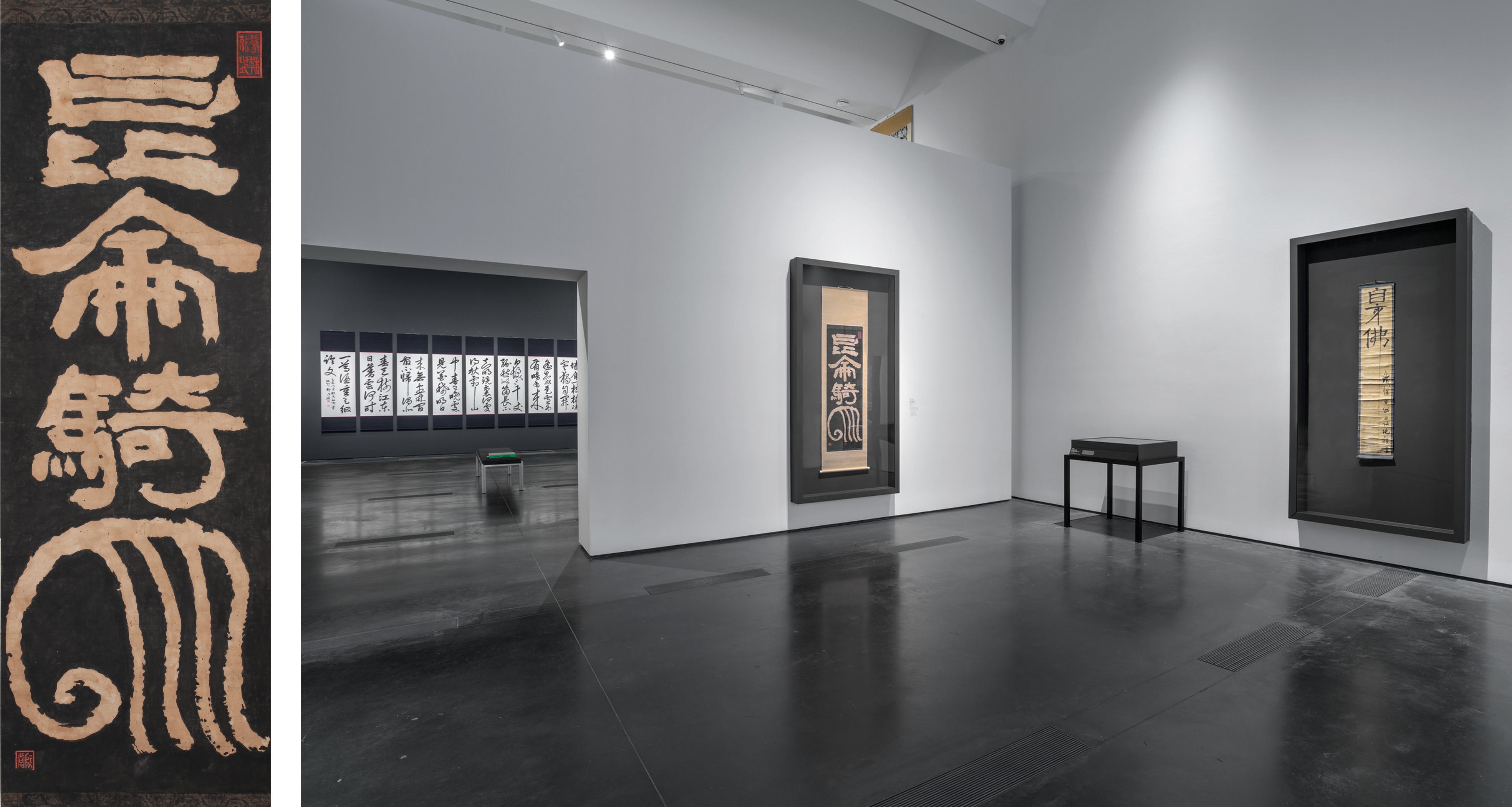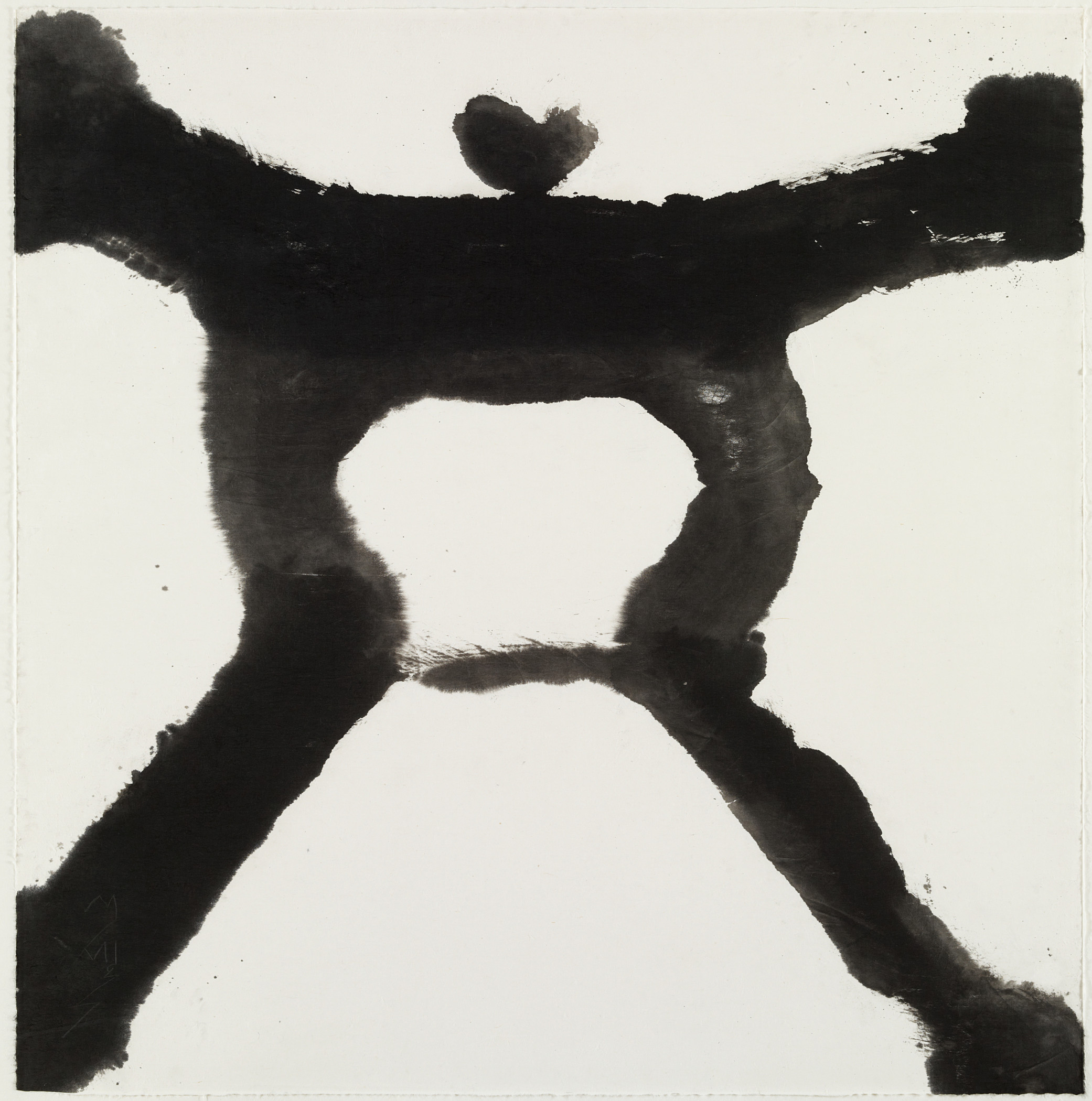The Faces of Korean Calligraphy in the Joseon Dynasty Los Angeles County Museum of Art June 27
Across Line: The Art of Korean Writing, on view in the Resnick Pavilion, focuses on the history of Korean writing and calligraphy, long considered one of the highest art forms in Korea. It is the countdown exhibition to emerge from The Hyundai Project: Korean Art Scholarship Initiative at LACMA, a global exploration of traditional and contemporary Korean art through research, publications, and exhibitions. In this interview, exhibition co-curator and LACMA assistant curator of Korean art Virginia Moon talks well-nigh the exhibition and what Korean calligraphy says about the people who created it.

Installation photograph of the exhibition Across Line: The Fine art of Korean Writing, at the Los Angeles County Museum of Art, June sixteen–September 29, 2019, photo © Museum Associates/LACMA
What was your approach in curating this exhibition?
What comes to mind for most Koreans when you say there is a calligraphy show is a small room full of scrolls and Korean grandfathers drinking tea, smoking, and patting each other on the back. But this isn't your grandfather'due south calligraphy bear witness.
With this show I am trying to push the concept of what it ways to create and live calligraphy. Nosotros've included archetype examples of Korean calligraphy, but also examples of calligraphy written on different media—ceramics, lacquer, metallic, wood, and more than. I wanted to show not merely different styles of calligraphy, but also the various ways Korean people have chosen to utilize information technology and why.
Each department of the bear witness is a mirror of the fourth dimension period in which those works were created, as well as the different behaviors, customs, and attitudes of each particular group of people in society. Ultimately this exhibition seeks to reveal the humanity and development of the people on the peninsula. Through writing, the show tells yous who these people were and are. In a lot of ways, there is zippo more personal than a human being taking ink to paper.
Can you elaborate on the different sections of the show and the fourth dimension periods covered?
The sections span from prehistoric times to the contemporary, which is a statement in itself, because near all Korean art exhibitions shown in the United States tend to stop at the end of the Joseon dynasty. I felt very strongly that we had to have it all the way upward to the present day.
What connections tin be drawn betwixt the different time periods represented?
1 not bad example is how the Majestic Calligraphy gallery puts classical calligraphy in directly dialogue with a contemporary work. In those days, the kind of majestic you were and your integrity and laurels were thought to be revealed in your writing.
I reached out to Jung Do-Jun, a contemporary artist and probably the most renowned official calligrapher in Korea. I asked him if he could produce a commissioned work for the exhibition in the style of the royals. Every bit it turns out, that is his specialty developed over the course of six decades. He produced an eight-scroll work based on a Chinese quatrain with parts by Tang Chinese poets Li Bai (701–762) and Du Fu (712–770) written in cursive script by King Seonjo (r. 1567–1608). To incorporate Chinese verse was a sign of bang-up learnedness and expected of the royals. Jung'southward do of "copying" is quite common in calligraphy, both every bit a learning method and every bit paying homage to the person who wrote it.

Yu Yeol and Jeong Inseung, Card with Diagram of Hangeul Oral fissure Movements, 1947, National Hangeul Museum, photograph courtesy of National Hangeul Museum
Tell us about the invention of hangeul.
The advent of hangeul in 1446 under King Sejong's reign was a game-changer. Up until the middle of the 15th century Chinese characters (hanja) were the only mode of reading and writing. Women and slaves were not expected to larn hanja and were largely illiterate. Hangeul was devised as a scientifically based phonetic language—the shapes of a character are based on the physical form of the within of the mouth when the sound is made. The official debut in the imperial court in 1446 was presented in a woodblock-printed book known as the Hunminjeongeum. A facsimile is in the prove. Since only two 18-carat copies exist in Korea, and given the rarity of this manual, it is very understandable that they would not want to lend information technology outside of the country. The Kansong Museum in Korea, which possesses the two originals and owns Korea's most renowned artworks, lent us an exact facsimile, which is displayed in the exhibition for the first time in the U.South. With hangeul, Korea finally had its own language. Rex Sejong intended the linguistic communication for the entire country, but it would be some other five centuries before the practice would be broadly realized. Initially, the women in the court embraced it, writing by and large personal letters. The men had to acquire how to write in hangeul to their wives.

Left: Gim Jeonghui, Mountain Gonryun Rides on an Elephant, Joseon dynasty, 19th century, Yi Sejong Collection; Right: Installation photograph of the exhibition Beyond Line: The Art of Korean Writing, at the Los Angeles County Museum of Art, June 16–September 29, 2019, photograph © Museum Assembly/LACMA
There's likewise a case written report in the exhibition about Gim Jeonghui. Who was he?
Gim Jeonghui was, and continues to be, hailed as the greatest Korean calligrapher of all time. He lived during the Joseon dynasty from 1786 until 1856, and he mastered every unmarried calligraphy style from Cathay. In his older age, while exiled in Jeju Island, he was able to synthesize his ain way. Up until that bespeak, calligraphers judged the quality of their own writing on how well they could re-create the great Chinese calligraphers. Gim was able to invent his ain style named Chusache after his sobriquet, Chusa. A broad range of styles are in existence and we dedicated a gallery to evidence as many of them as we could.
Are there any works you're especially excited to include in this show?
To me, one of the virtually invaluable and amazing objects, and yet, the most humble-looking ones, are the slave messages. We have two, and this is the commencement time there is tangible proof that at that place indeed was a slave (nobi) class that was quite active in society. In many renditions of Korean history, the nobi class in Korea is described in generalities. There was not much physical evidence that could be tied to the activities of individual slaves. So the scholarship on nobi has been somewhat limited. I'one thousand so proud that nosotros were able to secure these two messages, which are being shown exterior Korea for the starting time fourth dimension.

Suh Se Ok, Person, 1990, National Museum of Mod and Contemporary Art, Korea, © Suh Se Ok, photo © National Museum of Modern and Contemporary Art, Korea
You likewise said the exhibition goes upwardly to the nowadays day. How do you relate contemporary works to all of these historical examples?
Emerging from the early on mod period and into today, calligraphers started to be concerned about the future of calligraphy and questioned how to proceed the legacy of calligraphy alive and make calligraphy modern. Some of those experiments are in this section. We as well have a digital work by Ahn Sang-soo, the father of graphic design in Korea, questioning script and its future.
These artists break all the rules. Artistically, that is a heroic affair to witness. I have the greatest respect for the artists, who are mostly living, represented in this section. They are aware of how far back this tradition goes, but they brought to the present the question, "Can I do more?" I hope this section leaves viewers asking more questions.
Beyond Line: The Art of Korean Writing is on view in the Resnick Pavilion through September 29. This article was offset published in the Summer 2019 issue of Insider.
Source: https://unframed.lacma.org/2019/09/05/beyond-line%E2%80%94-conversation-virginia-moon
0 Response to "The Faces of Korean Calligraphy in the Joseon Dynasty Los Angeles County Museum of Art June 27"
Postar um comentário